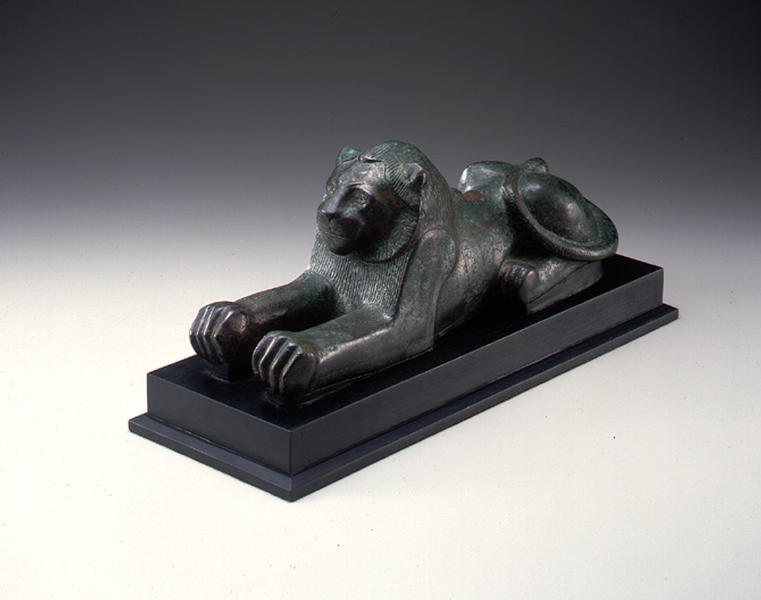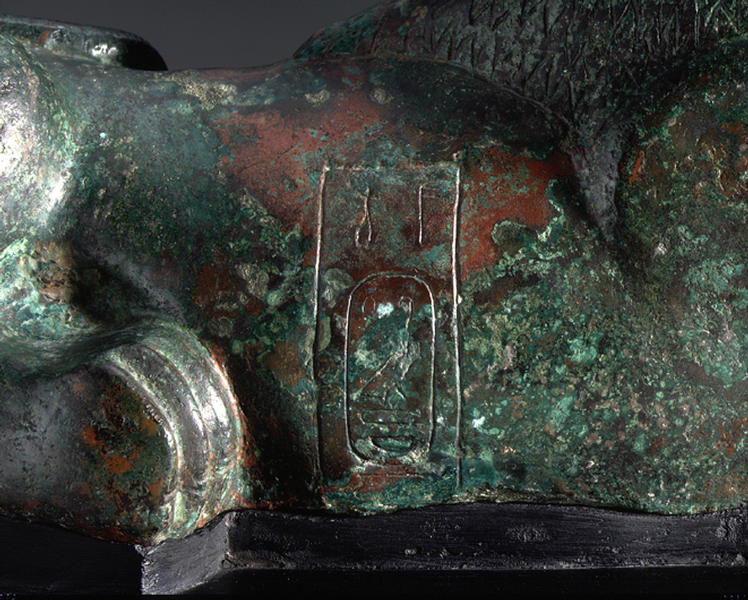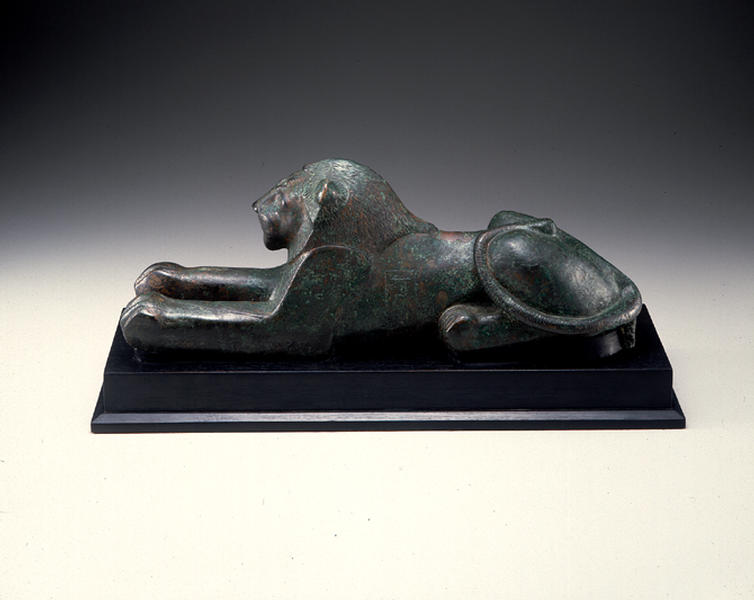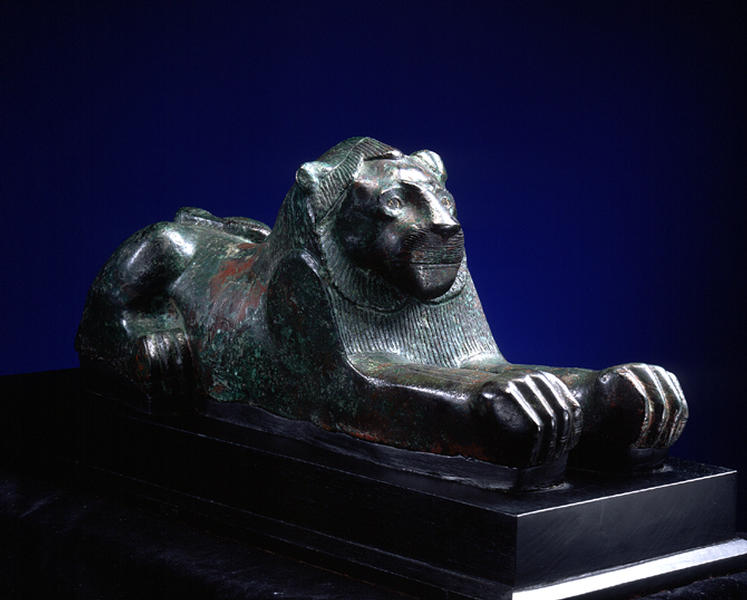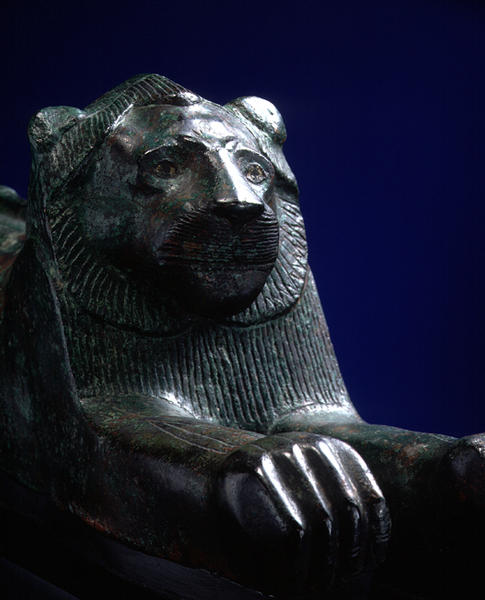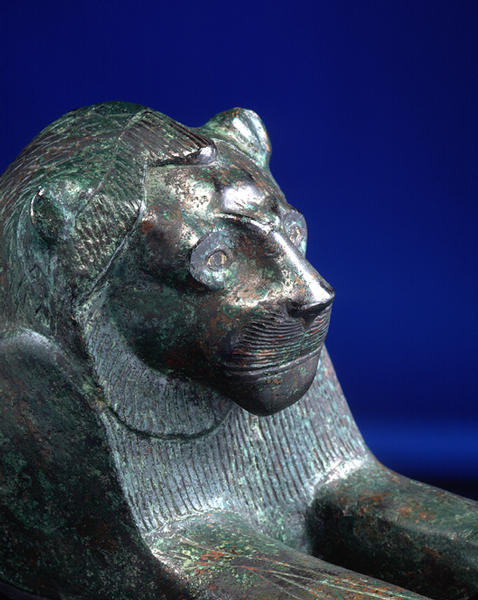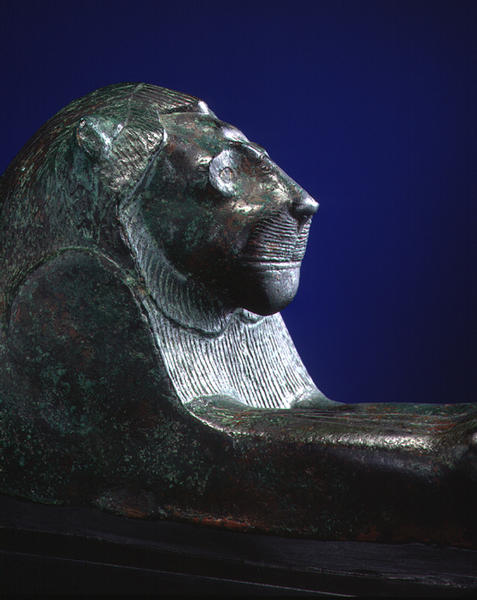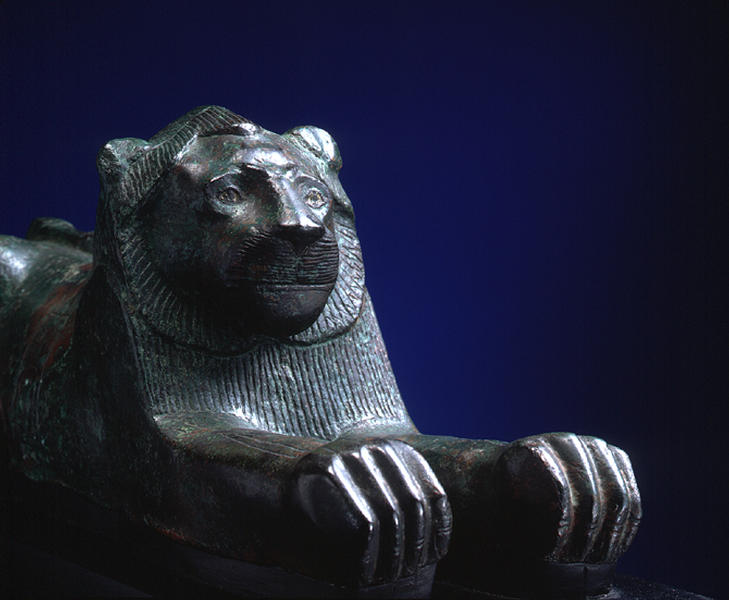Lion
- Egypt
- Egypt, Dynasty 26 (664-525B.C.)
- 7-6cB.C.
- Bronze, gold
- H-16 D-48
Catalogue Entry
This bronze figure of a lying lion stretches its forelegs out horizontally and coils up its tail over the left hip in a typical lying posture of ancient Egyptian art. Two tenons, each about 5cm long, protrude from the underside, one from between the two joints of the forelegs and the other from the pelvic area; these were used to attach the figure securely to the base. They might have served as ports through which molten bronze was poured in the lost-wax casting process. The thickness of the figure varies widely from 5mm to 16mm. The eyeholes and the eyes are set flat into the figure, with the whites of the eyes inlaid with gold. A simple design is chiseled on the surface after casting. The front part of the animal's mane and the chest share the same sloping plane. A simple pattern representing pointed tufts of the lion's mane is repeated around the face, and a shorter combination of the same pattern covers the back of the animal. Under the inverted triangle that represents the nostrils, simple parallel lines are cut for the whiskers. These design elements are considered to be a simplification of the designs seen on stone statues of Sekhmet and sphinxes with kings' faces produced in the New Kingdom era.
In a rectangular frame found on the right side of the body, the name King Psamtik of the 26th dynasty can be found, enclosed in a cartouche, although it is severely eroded. On the left side, even more severely eroded, two hieroglyphs for the pronunciation asar, referring to Osiris, can be made out in a similar rectangular frame. It is speculated that this is a part of an often used expression found on bronze statues of this type "May Osiris give life to...."*1
Egypt during the 26th dynasty repelled foreign powers Assyria and Kushite and exhibited a growing interest in cultural restoration. The people in this period learned a great deal from what remained from the Old Kingdom and the New Kingdom and engaged themselves in their own creative activities. Egyptians who sought eternal life had their names carved on a figure like this and dedicated it to the tribute room of a temple. When the room became filled with them, these objects were moved to a special place in the temple compound and buried there.*2
A bronze figure of a lion almost identical in style (34cm in length and 11mm in thickness) has been excavated from the temple compound in Leontopolis. It is owned by the Bode Berlin National Museum.*3
